
. Improvements in tread performance, rolling resistance reduction, handling, and durability have been well documented. As vehicles have evolved over the past 20 years, tyres have had to adjust along with them. Larger vehicles, higher performing vehicles, and light-weighting, along with the introduction of electric vehicle technology, are all trends that have steered development over the years.
 Through all of it, several key areas in tyre testing have remained steady. Tyres need to meet minimum safety and performance standards as dictated by governments and vehicle OEMs.
Through all of it, several key areas in tyre testing have remained steady. Tyres need to meet minimum safety and performance standards as dictated by governments and vehicle OEMs.
• Tyre durability testing depends on a variety of industry test standards such as endurance testing on a drum.
• Wet stopping distance, tread wear, and winter traction testing have very specific on-vehicle testing requirements.
• Rolling resistance testing utilises a couple standardised test methods to measure the amount of hysteretic energy loss from a rolling tyre on a drum and specified surface.
• Force and moment testing on a moving belt has been used to characterise tyre performance for vehicle design as it relates to cornering and other use conditions.
As time has passed, tyres have been asked to do more and more on vehicles. While the testing methodology has remained similar, conditions have been altered to accommodate these vehicle performance expectations. And while reducing testing time has always been a goal, many of these standard tests still require the same amount of time to conduct.
Because much of tyre testing has been standardised over the years, many facets of the industry can use tyre testing data as a unifying benchmark for evaluating specific performance criteria. For OEMs, the data is valuable to the vehicle development process. For tyre companies, the data is used in a marketing context to compare and contrast features for consumers. Trucking fleets use the data to optimise their operations and reduce costs and fuel consumption. Consistency in testing methodology provides the industry with a unifying foundation of benchmarking data.
That being said, older methods are always being reviewed for obsolescence. For example, NHTSA in the United States is currently considering the removal of test standards for bead unseat and plunger energy testing that were originally developed for bias ply tyre designs.
There are always efforts to look at novel ways of improving the tyre testing process and increasing speed to market. For example, experimenting with different surfaces for drum and belt testing of tyres continues to take place in an attempt to more closely replicate an infinite number of real-life surface conditions. Man-made snow has been developed to extend testing seasons and try to mirror natural snow in an indoor environment. As the industry learns more about how pressure loss impacts rolling resistance and fuel efficiency, more methods have been developed to measure how well different inner liner materials maintain steady tyre pressure. Tyre companies can more readily choose the right materials of construction to suit performance requirements by using material property data from finite element analysis.
Many of these testing methodologies are trending towards virtual testing and modelling of tyre performance. And while tyre modelling has been around since the 1980s, the amount of data and range of data measurement required has increased exponentially.
The key automotive trends driving tyre development going forward continue to be electrification and autonomy. These trends will bring their own challenges to testing and validation. Electrification will present some traditional challenges with new applications, such as managing heavier loads, more aggressive torque / tread wear, reducing noise, and lowering rolling resistance. New materials and constructions are being developed to accommodate these unique challenges for electric vehicles. Tyre tuning will become exceptionally important as second-life tyres are brought into the mix, as consumers will want consistent performance.
From the perspective of autonomous vehicles, sensors and tyre intelligence are being added to provide new data sources for autonomous systems. Tyres equipped with these sensors will have to undergo the same endurance, durability, and performance tests to ensure the sensor can function as designed when faced with the same rigors as the tyre. Depending on where the sensors are mounted in the tyre/wheel assembly, normal tyre dynamics could adversely affect the accuracy of measurements or transmission of data to the vehicle. As aftermarket tires and sensors are developed, testing and validation should follow the same standards to simplify service and compatibility for consumers. Ease of replacement will be critical, as this directly affects the consumer and dealers.
There will continue to be developments and ongoing efforts to improve the fidelity and range of tyre testing data. These improvements will strive to speed up development cycles and improve virtual models going forward. However, the established standards and protocols continue to provide a steadfast and reliable set of tools that development teams, independent evaluators, and testing organisations can use to address new challenges and ensure that the ultimate goal of safety is met for regulatory bodies and consumers.
Dr. James A. Popio is Vice President of Operations - North America of the Smithers Materials Science and Engineering division. Prior to his current role, he was Vice President and General Manager of Smithers in the United Kingdom. Before that, he was General Manager and Director of Engineering at Smithers' Tire and Wheel Testing Laboratory in Ravenna, Ohio.
Jim has worked with the tyre and rubber industry for 20 years and has spent his professional career working for and/or with tyre companies, tyre dealers, automotive OEMs, industry suppliers, manufacturers, standards organisations and government agencies.
Jim has extensive experience in tyre performance, characterisation, and methods development. His specialty areas of expertise are force and moment, endurance, aging, compliance, indoor wear, rolling resistance, and characterisation for modelling. Jim is a regular contributor to industry journals as well as a chair and speaker at major tyre and rubber conferences. Jim has a PhD in engineering and MS, and BS in mechanical engineering from the University of Akron
Fornnax Inaugurates 12-Acre Global Hub For Recycling Innovation
- By TT News
- November 27, 2025
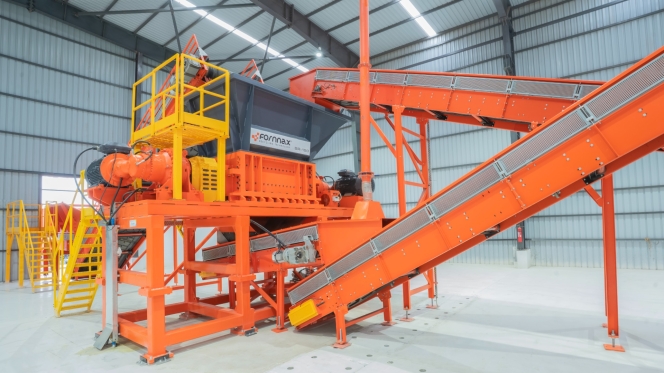
Fornnax has officially launched one of the world's largest integrated hubs for recycling innovation: a New Product Development centre and demo plant spanning over 12 acres. This facility is a critical milestone in the company's strategic vision to become a global leader in recycling solutions by 2030. It is designed to accelerate the advancement of recycling technology through a comprehensive, customer-focused approach.
The centre’s core function is its New Product Development framework, which is built upon a meticulous Gate Review Process. This system ensures precision from conception to completion. The journey begins with market research and ideation from the Sales and Marketing team, followed by a strategic review by the Leadership Team. The Design Team then creates detailed plans that are evaluated by Manufacturing, Service and Safety teams. After final approval, a functional prototype is built and subjected to a rigorous six to eight-month validation phase. The process concludes with design optimisation for mass production, officially launching the equipment for the global market. This method not just upgrades Fornnax's shredders and granulators – enhancing their capacity, energy efficiency and operational availability to 18–20 hours per day – but also validates the equipment for up to 3,000–15,000 hours under real-world conditions

A key feature of the facility is its open-door policy for clients. Customers can bring their specific materials to the demo plant to test equipment performance across various machines and conditions, providing a risk-free environment for informed investment decisions. The centre will also drive research into emerging recycling applications, such as E-waste, cables and lithium-ion batteries, where specialised engineering teams will conduct feasibility studies to design tailored solutions.
Beyond technology, the facility includes an OEM training centre dedicated to developing a skilled workforce. The programme trains operators and maintenance engineers, who gain hands-on experience before being deployed to support Fornnax's customer base. The company will also deliver comprehensive corporate training to domestic and international clients, empowering them with the expertise for optimal plant operation and maintenance. By uniting R&D, testing and training under one roof, Fornnax is establishing a powerful foundation to scale its offerings and lead the next generation of recycling technology.
Jignesh Kundariya, Director and CEO, Fornnax, said, "Innovation in product development is the key to success of becoming a global leader. With this new facility, we now have the speed, flexibility and controlled environment to design, test and validate new technologies in just six to eight months, something that would take significantly 4–5 years at a customer site. Each machine will undergo validation according to global standards, with every critical part and assembly rigorously tested under Engineering Build (EB) and Manufacturing Build (MB) protocols. Our goal is to empower customers with clarity and confidence before they invest. This facility allows them to test their own materials under real-world conditions, compare machines and see results firsthand. It’s not just about selling equipment; it’s about building trust through transparency and delivering solutions that truly work for their unique needs.”
Smithers to Expand Rolling-Resistance Testing Capabilities in China
- By TT News
- November 21, 2025
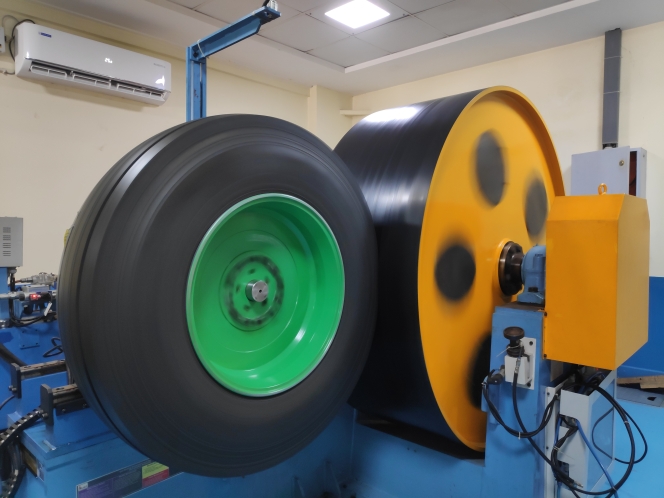
Smithers, the US-based testing and consulting group, is expanding its tyre testing operations in China with three new capabilities designed to better replicate real-world driving conditions. The investment will enhance the company’s rolling-resistance testing at its Suzhou tyre and wheel centre, strengthening its offering to global carmakers and tyre manufacturers.
The new features focus on factors that can influence vehicle energy loss, range, and overall efficiency—a growing concern as regulators tighten standards and EV makers push for longer driving range.
One new capability will allow rolling-resistance testing to be carried out with variations in slip and camber angles for passenger car and light truck tyres. Standard tests are performed at zero degrees, but even small changes in wheel alignment or body movement during real driving can affect energy consumption. The enhanced system lets customers study these effects and refine tyre designs accordingly.
Smithers is also adding high- and low-temperature rolling-resistance testing for truck and bus tyres, an extension of the temperature-controlled testing it introduced for passenger tyres in 2022. The company said demand has risen as manufacturers look to understand how cold weather affects range—a key issue for electric commercial vehicles.
A third new service will allow tyres to be tested together with chassis components such as half-shafts and brake discs. This gives OEMs independent data on how these parts contribute to overall resistance, helping them to identify where energy is being lost and to fine-tune vehicle efficiency.
All three capabilities are expected to be online by 1 December 2025.
“Smithers is seeing increased demand on a global scale for testing of tires and vehicles that more closely mimics real-world conditions,” said Derek Read, Vice President of Asia Pacific / Global Development, Materials Science and Engineering, Smithers. “These new capabilities are strategic investments into the refined, scenario-based testing our clients require to improve both tire and tire-chassis-vehicle system performance.”
Autonomous Robots Transform Continental Retreading Operations
- By TT News
- November 19, 2025
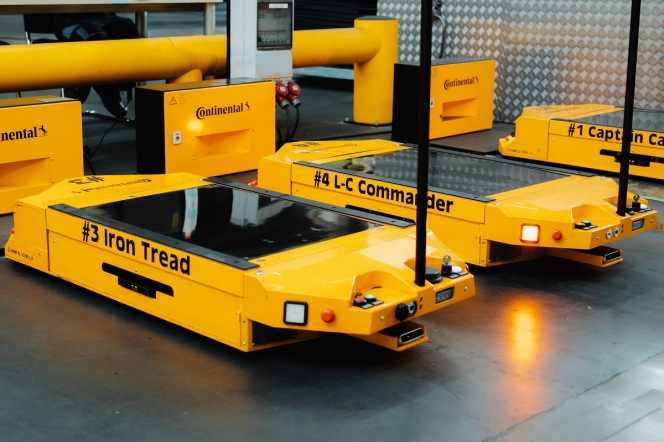
Continental's Hannover-Stöcken plant is pioneering a new era in sustainable manufacturing by seamlessly integrating advanced robotics into its core operations. Since their deployment in March 2025, a team of seven autonomous mobile robots (AMRs) has become the central nervous system for material transport, fundamentally reshaping the workflow for retreading truck and bus tyres.
This shift to automation has profoundly changed the human role on the production floor. Employees, once tasked with the physically strenuous job of manually moving heavy tyres using cranes and trolleys, are now focused on more cognitively demanding responsibilities. Their expertise is directed towards machine setup, process oversight and meticulous quality control, making their work more ergonomic and skilled.
The AMRs operate with sophisticated independence, navigating the production hall using a fusion of sensors, 360-degree cameras and AI-driven software. They efficiently ferry ‘green’ tyres between critical stages: from the building machine, where fresh rubber is applied, to the curing presses for vulcanisation and finally towards inspection. This automated coordination is digitally linked to the plant's order system, allowing for dynamic routing to optimise workflow and manage capacity.
This initiative is a cornerstone of Continental's global strategy to modernize tyre production through digitalisation and smart automation. The success in Hannover has already inspired the rollout of similar robotic solutions across the company's international network, from North America to Asia. The move aligns perfectly with the plant's sustainable mission, which is the ContiLifeCycle process itself. This process breathes new life into used tyre casings by carefully inspecting them, applying new tread rubber and vulcanising them to create a product that performs like new. The environmental benefit is substantial, as up to 70 percent of the original tyre's material is reused, significantly conserving resources.
The human element was crucial to the project's success. Continental ensured widespread employee acceptance through comprehensive training and even involved the workforce in christening the robots with creative names. This thoughtful approach has cemented the AMRs not as mere machines but as valued teammates in a shared mission to make tyre production more efficient, sustainable and future-ready.
Felix Hantelmann, head of the ContiLifeCycle plant, said, “Self-driving robots have been supporting our production workflow for six months now. They handle simple, repetitive transport tasks such as moving a tyre from one point to another. The robots are directly connected to our digital order system, so they know exactly where to go and how to coordinate with each other to get there. They are a valuable addition to our daily operations and help create a safe, efficient and ergonomically optimised production environment.”
Continental Deploys Vacuum Tech For Real-Time Tyre Wear Particle Analysis
- By TT News
- November 18, 2025
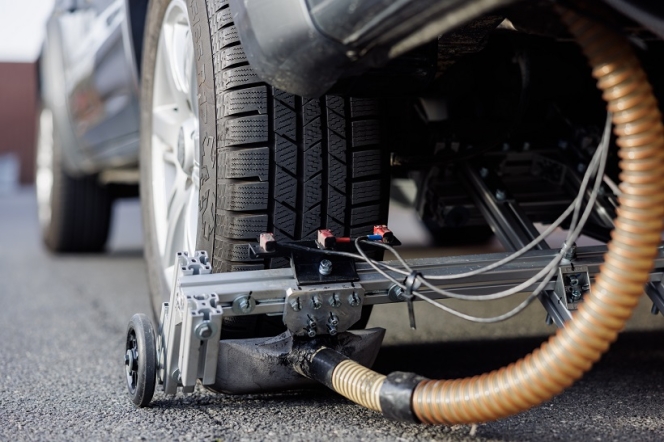
Continental's leadership in reducing tyre wear is fundamentally driven by its pioneering research into how particles are generated. A pivotal element of this strategy is the recently concluded OLRAP project, a collaboration with the Technical University of Braunschweig that broke new ground in real-world particle analysis. The research team engineered a complex experimental vehicle, outfitting it with a custom vacuum system and sensitive particle sensors. This innovative setup enabled the real-time collection and analysis of airborne particles directly at their source – the rolling tyre – under actual driving conditions. The resulting data, which for the first time correlates specific driving dynamics like aggressive acceleration and hard cornering with particle emissions, provides an unprecedented understanding of wear patterns.
This deep, data-driven insight is what directly fuels Continental's product development. By knowing precisely how and when wear occurs, engineers can make targeted optimisations to tread patterns and rubber compounds. The objective is to systematically design tyres that shed less material, thereby directly reducing their environmental footprint from abrasion. This development process rigorously maintains the critical safety and performance standards that drivers demand.
The tangible success of this research-to-development pipeline is confirmed by independent analysis, which shows Continental tyres abrade 11 percent less material than the competitor average. Furthermore, this proactive research and development strategically prepares the company for upcoming regulations like the Euro 7 standard, which will impose limits on tyre wear emissions. Beyond its own laboratories, Continental extends this commitment through cross-industry efforts, co-chairing the Tire Industry Project and contributing to public initiatives aimed at capturing tyre particles from road runoff. Through this integrated approach, Continental is leveraging fundamental scientific discovery to create more sustainable mobility solutions.


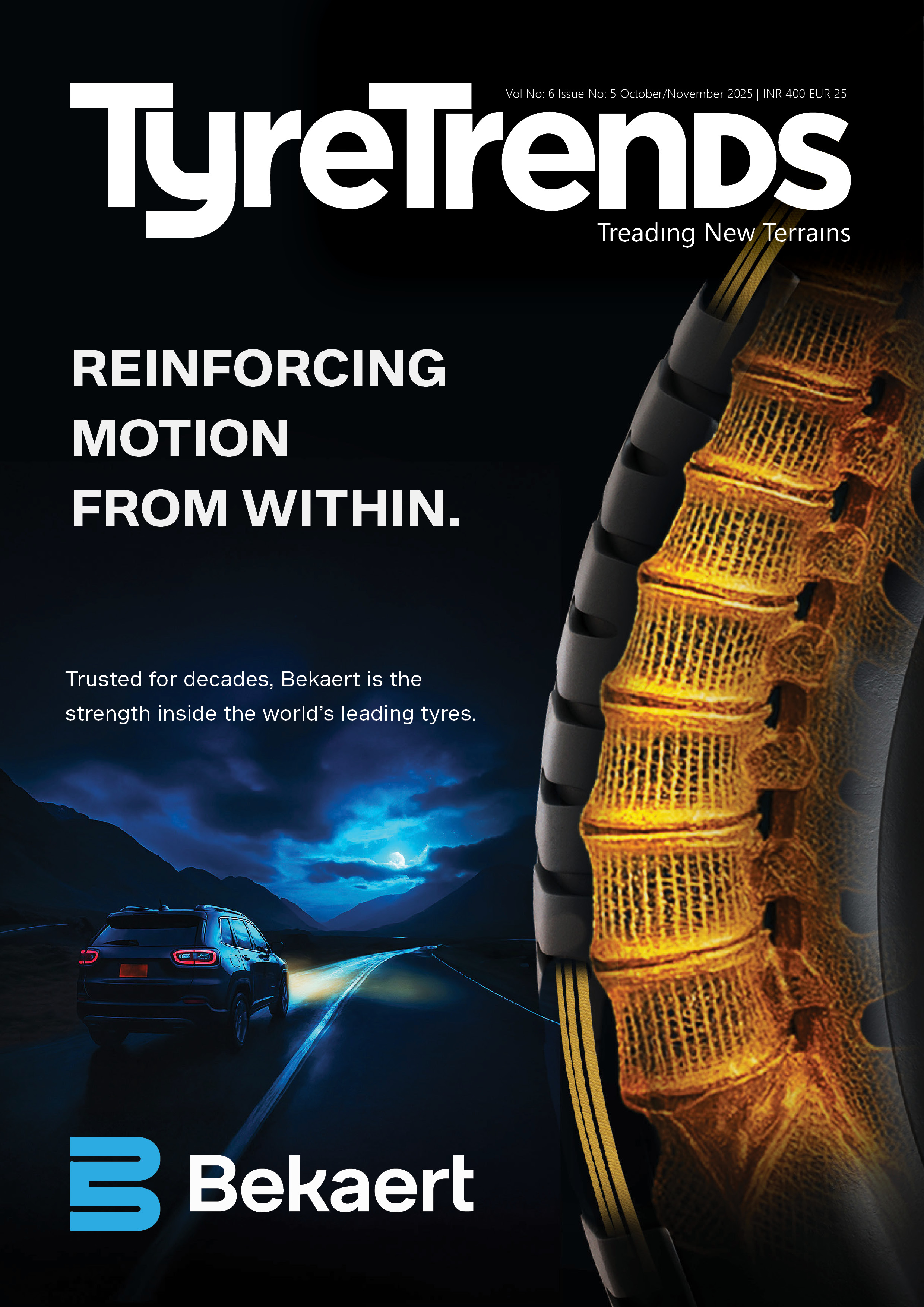

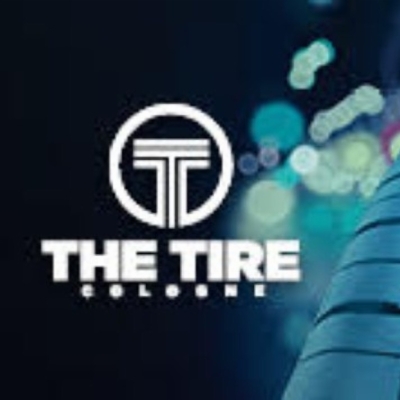


Comments (0)
ADD COMMENT